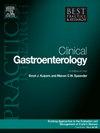How to measure quality in ERCP?
IF 4
3区 医学
Q2 GASTROENTEROLOGY & HEPATOLOGY
Best Practice & Research Clinical Gastroenterology
Pub Date : 2025-06-01
DOI:10.1016/j.bpg.2025.101999
引用次数: 0
Abstract
Endoscopic Retrograde Cholangiopancreatography (ERCP) is a technically complex and high-risk procedure for managing pancreaticobiliary diseases. The quality assessment in ERCP has evolved from relying solely on adverse events (AEs) rates to a more comprehensive approach incorporating structural, process, and outcome indicators.
Structural metrics include appropriate indications, informed consent, and procedural difficulty grading. Process metrics focus on bile duct cannulation, stone clearance, stent placement, and radiation exposure documentation. Outcome metrics assess AEs, such as post-ERCP pancreatitis and bleeding rates. Patient-reported outcome measures are valuable tools for capturing morbidity beyond traditional quality metrics.
Competency in ERCP requires structured training, continuous assessment, and mentored practice.
High-volume centres consistently demonstrate superior outcomes, reinforcing the need for centralisation and robust quality assurance programs.
Future advancements, including artificial intelligence and large-scale registries, promise to standardise practices and improve ERCP outcomes.
This review provides a comprehensive framework to measure and enhance quality in ERCP.
ERCP中如何衡量质量?
内镜逆行胰胆管造影(ERCP)是一种技术复杂且高风险的胰胆管疾病治疗方法。ERCP的质量评估已经从单纯依赖不良事件(ae)率发展为结合结构、过程和结果指标的更全面的方法。结构指标包括适当的适应症、知情同意和程序难度分级。过程指标侧重于胆管插管、结石清除、支架放置和辐射暴露记录。结局指标评估ae,如ercp后胰腺炎和出血率。患者报告的结果测量是超越传统质量指标捕获发病率的宝贵工具。ERCP的能力需要结构化的培训,持续的评估和指导实践。高容量中心一贯表现出优异的结果,加强了对集中和强有力的质量保证计划的需求。未来的进步,包括人工智能和大规模注册,有望使实践标准化并改善ERCP结果。本综述提供了一个全面的框架来衡量和提高ERCP的质量。
本文章由计算机程序翻译,如有差异,请以英文原文为准。
求助全文
约1分钟内获得全文
求助全文
来源期刊
CiteScore
5.50
自引率
0.00%
发文量
23
审稿时长
69 days
期刊介绍:
Each topic-based issue of Best Practice & Research Clinical Gastroenterology will provide a comprehensive review of current clinical practice and thinking within the specialty of gastroenterology.

 求助内容:
求助内容: 应助结果提醒方式:
应助结果提醒方式:


